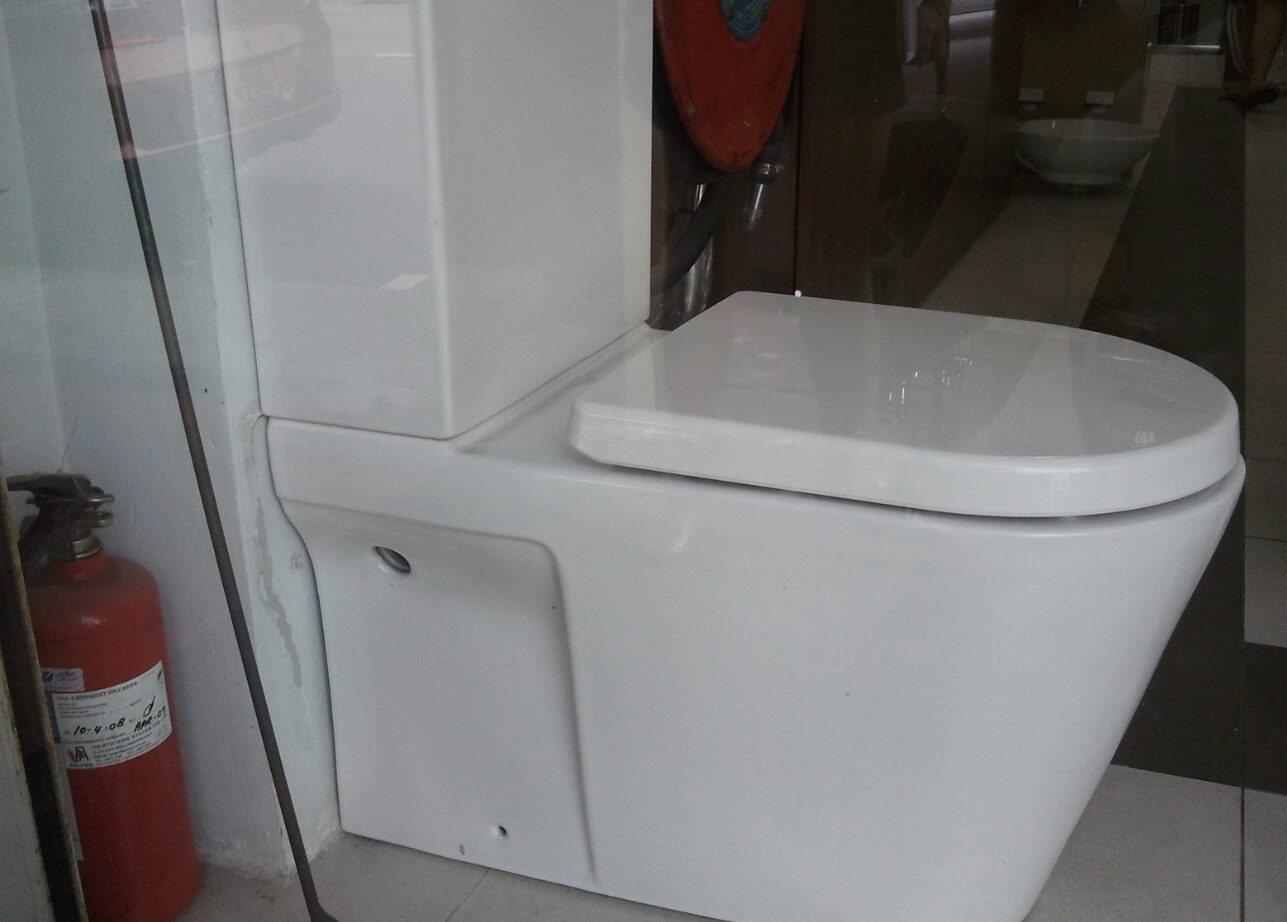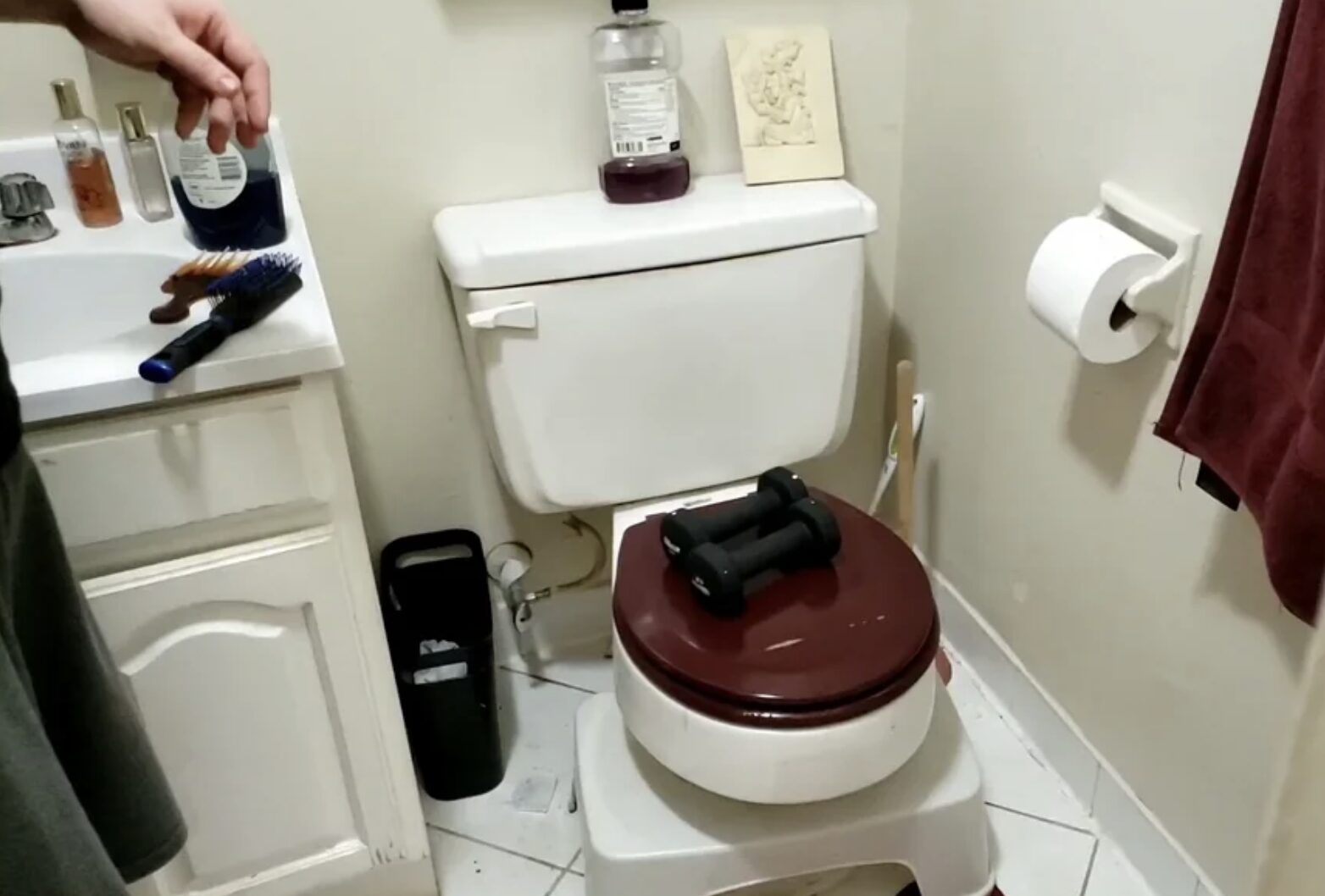
Nightmare! Total nightmare! I really don’t know how else to think or write about this. Rats in the toilet? Just the thought sends shivers down my spine, and honestly, I don’t even want to entertain the idea, let alone experience this scenario firsthand. After hearing a few urban legends, I was curious (and terrified), so I started asking around. My friends were just as skeptical and freaked out. “No way that can happen,” they laughed. But guess what? It’s not a myth.
Rats can, indeed, make their grand entrance right into your toilet, and just knowing this fact was enough for me to dive deep into a frenzy of worrying and researching. Like, what in the world would I do if I encountered a rat in my toilet? The first thing that pops into my mind is to run. But realistically, so would the rat—potentially after me! Clearly, I needed better solutions. So here’s the lowdown on what I discovered…

First Things First: Can Rats Really Swim Up Our Toilets?
Absolutely, yes. Rats in the toilet aren’t just some horror movie fiction; they’re a startling reality. These creatures are surprisingly adept swimmers. They can hold their breath for up to three minutes and tread water for as long as three days. They can even squeeze into spaces as tiny as a quarter. The usual route for these sewer-loving swimmers begins in your home’s main sewer line. They shimmy up, navigating through the narrow urban waterways, and presto, they pop up in your toilet like a grotesque surprise in a jack-in-the-box.

How Do They Do It?
Well, it turns out rats are attracted to the scents of food and waste that linger in our sewer lines. They explore these lines by squeezing through the smallest of cracks and climbing inside the vent stacks that lead to the roofs of buildings. Once they find a drainpipe that leads downward toward a toilet, it’s merely a matter of paddling upwards and making a grand entrance right into the porcelain throne.
Encounter of the Rodent Kind
Imagine this: it’s the dead of night, you’re groggily making your way to the bathroom, and as you flip on the light, there it is—a rat, casually lounging in your toilet bowl. What do you do? Well, after my initial instinct to sell the house and move to a rat-free island subsides, here’s the more rational action plan I put together after consulting with every expert source I could find:
Keep Your Cool: Panicking will likely scare the rat, potentially driving it to seek refuge in even less accessible parts of your home.
Contain the Situation: Quickly close the toilet lid to prevent its escape and place something heavy on top. Rats can be surprisingly strong, and the last thing you want is a chase scene in your bathroom.
Dial for Help: This is definitely a situation for the professionals. Pest control can manage the situation with the right equipment and safety protocols.
Handling a Deceased Visitor: If the rat isn’t alive, wear gloves to remove it from the bowl, place it in a sealed bag, and dispose of it properly. Don’t forget to disinfect every surface within a mile radius (okay, maybe just the bathroom).

Flushing is a No-Go: Whether it’s dead or alive, flushing the rat is a bad idea. It’s inhumane if it’s living, and could cause significant plumbing issues either way.
Prevent Future Uninvited Guests: After handling the immediate crisis, consider installing a non-return valve in your sewer system. This gadget allows waste to exit but prevents rodents from entering.
Regular Checks: Keep an eye on your plumbing to ensure there are no easy entry points for future intruders. Make sure all pipes and vents are secure and in good repair.

As for me, since learning all this, I’ve been extra vigilant. Maybe I’m checking the toilet a bit too obsessively before each use, but hey, can you blame me? And about that idea of moving out? Well, let’s just say my browsing history has seen a significant increase in real estate listings.
So, do you believe it now? —rats in your toilet aren’t just an urban myth but a potential reality. But with the right knowledge and precautions, you can prevent these terrifying scenarios and tackle them with confidence if they do arise. Stay alert, stay informed, and maybe keep a heavy book near the bathroom, just in case.
Cachorro late para caixão durante funeral, filho desconfiado abre e encontra vazio – História do dia

Ryan saiu do carro e ficou do lado de fora da igreja, sabendo que não estava pronto para dizer adeus ao pai. “Não conseguimos nem dar um funeral decente ao pai”, pensou. De repente, o latido agudo de Bella o distraiu.
Ryan se virou para o carro, onde Bella estava mais agitada do que o normal.
“Bella!” Ele fez um sinal com a mão para ela se deitar, e ela obedeceu. Ele deu um tapinha na cabeça dela pela janela aberta do carro. “Agora, fique, Bella.”
Ryan então se afastou, ignorando o lamento de Bella, e entrou na igreja. O caixão de seu pai Arnold já estava no lugar, fechado, e o agente funerário havia discretamente isolado a área imediata porque Arnold havia morrido de uma doença infecciosa.

Apenas para fins ilustrativos | Fonte: Pexels
Ryan sentou-se ao lado da mãe. Arnold seria cremado, não enterrado, dadas as circunstâncias de sua morte.
Assim que a missa terminou e os enlutados se levantaram para cantar o hino final, o latido de Bella ecoou pela igreja. Ela pulou no caixão, derrubando o arranjo de flores no chão, e começou a latir alto.
Quando Bella se sentou em posição alerta no chão e olhou para ele, Ryan sentiu que algo estava errado.
“Abra o caixão!” ele exigiu.
Um suspiro ecoou na reunião. Ryan não se importou. Ele andou até o caixão e o abriu, apenas para encontrá-lo vazio.
“O-Onde está meu irmão?” Seu tio olhou para o agente funerário.
A mãe de Ryan não conseguia suportar o que estava acontecendo. Seus olhos reviraram em seu crânio, e seus joelhos cederam. Ryan a segurou bem a tempo antes que sua cabeça batesse no chão de mármore. Ele a levou às pressas para o hospital.

Apenas para fins ilustrativos | Fonte: Pexels
Na casa de sua mãe, Ryan chamou a polícia.
“A essa altura, tudo o que sabemos é que o legista confirmou a causa da morte e liberou os restos mortais para a funerária”, disse o detetive Bradshaw. “Seu pai estava envolvido em alguma atividade da qual eu deva estar ciente?”
Ryan não se envolveu nos negócios do pai desde que ele abriu seu centro de treinamento e reabilitação de cães. Mas ele sabia que Arnold nunca colocaria a reputação dele ou da empresa em jogo.
Como ainda não havia nenhuma pista vital, o detetive Bradshaw foi embora, prometendo manter contato com atualizações. Mas Ryan não queria esperar. O hospital estava mantendo sua mãe durante a noite. Ele deixou Bella em casa e foi ao necrotério para encontrar respostas.

Apenas para fins ilustrativos | Fonte: Pexels
“O legista renunciou? E o novo legista?” Ryan ficou perplexo quando a enfermeira na recepção o informou que ainda não havia um novo legista. Ele pediu para ver o arquivo do pai, mas a enfermeira recusou, dizendo que era contra as políticas.
Ryan sabia como convencê-la. Ele colocou $1000 no balcão, e ela fez vista grossa quando ele entrou no escritório do legista. Ele começou a procurar nas prateleiras pelo arquivo do pai, mas foi inútil. O arquivo de Arnold estava desaparecido.
Ryan estava frustrado. De repente, seu telefone zumbindo o distraiu. Era o advogado de seu pai, o Sr. Stevens. O homem mais velho informou a Ryan que ele era o novo CEO da empresa de Arnold e queria vê-lo urgentemente.
Quando Ryan chegou ao escritório do pai, ele abriu o Gmail de Arnold no computador do escritório, apenas para encontrar a caixa de entrada vazia. Alguém havia deletado as mensagens.
“Ryan! Que bom ver você”, o Sr. Stevens entrou na sala e fechou a porta atrás de si.

Apenas para fins ilustrativos | Fonte: Pexels
“Quem está usando este computador?” Ryan perguntou.
“Ninguém”, respondeu o Sr. Stevens.
“Espere, onde estão os dançarinos?” Ryan notou que duas estatuetas estavam faltando no escritório de seu pai.
“Oh, ele os levou para casa. Pobre Arnold… ele nunca conseguiu a terceira estatueta do conjunto. Você acredita que o homem que a possui não aceita nada menos que meio milhão?”, disse o Sr. Stevens.
Ryan tinha certeza de que Arnold não os havia levado para casa. Ele tinha andado por toda a casa dos pais desde que chegou para o funeral, e não tinha visto aqueles dançarinos em lugar nenhum.
“Mas, de qualquer forma, temos assuntos mais importantes para discutir…” O Sr. Stevens informou a Ryan que eles estavam com dívidas severas e que vários investidores estavam ameaçando retirar seus investimentos porque Arnold estava faltando a reuniões com eles por meses antes de sua morte.
“…e tudo começou quando sua nova secretária começou a trabalhar aqui. Com todo o respeito a Arnold e sua família, acredito que ele estava tendo um relacionamento romântico com ela”, revelou o Sr. Stevens.

Apenas para fins ilustrativos | Fonte: Pexels
Ryan perdeu a calma quando o pensamento do rosto triste de sua mãe cruzou sua mente. Ele teria confrontado a secretária de seu pai se o Sr. Stevens não o tivesse impedido — isso só mancharia a reputação de Arnold.
Ryan passou o dia resolvendo o problema da dívida e enviou cestas de presentes para os investidores mais vitais. Depois do trabalho, ele seguiu a secretária do pai, Srta. Pearson, e a viu estacionar na garagem de uma modesta casa suburbana. Ela era sua única pista até agora, então ele esperou do lado de fora da casa dela em seu carro.
Algum tempo depois, o barulho de zumbido da porta da garagem dela o acordou. Ele a viu indo na direção da cidade em seu carro e quis segui-la. Mas então ele teve uma ideia melhor. Ele saltou do carro e conseguiu entrar na garagem dela bem a tempo antes que a porta se fechasse. Lá, ele encontrou uma porta que dava para a casa dela.
Ele encontrou a cozinha primeiro, procurou nas gavetas e encontrou uma lanterna. Ele não queria acender as luzes caso a Srta. Pearson chegasse em casa de repente. Seu coração afundou quando ele entrou no quarto dela e viu uma foto emoldurada dela beijando Arnold na mesa de cabeceira.
Ryan manteve a compostura, lembrando a si mesmo que estava ali para encontrar uma pista que o ajudasse a descobrir o que aconteceu com seu pai. Ele procurou na casa da Srta. Pearson, mas não conseguiu encontrar nada. Abatido, ele estava prestes a sair quando notou uma gaveta ligeiramente aberta na mesa de centro.

Apenas para fins ilustrativos | Fonte: Pexels
Um envelope de Manila ali o interessou. Dentro dele estava a apólice de seguro de vida de Arnold por US$ 7 milhões, e a única beneficiária era… a Srta. Pearson! Ryan pegou o documento e dirigiu até a delegacia de polícia.
“Isso é bem convincente…”, disse o detetive Bradshaw, olhando para o documento. “Deixe-me ver o que mais posso descobrir sobre essa mulher Pearson.”
Ryan estava sentado perto da recepção quando ela se aproximou dele com uma equipe de oficiais. Acontece que a Srta. Pearson tinha uma reserva em um voo para Marrocos, que sairia em meia hora.
“Como os EUA não têm tratado de extradição com o governo marroquino, é vital que a levemos para interrogatório antes que ela embarque no avião!”
Ryan queria acompanhar os policiais, mas o detetive Bradshaw recusou porque ele era um civil. Ryan não a ouviu e a seguiu.
“Polícia!”, gritou a detetive Bradshaw enquanto ela e sua equipe se aproximavam de um portão de embarque. “Deixe-nos passar!”

Apenas para fins ilustrativos | Fonte: Pexels
Ryan passou pelos agentes de segurança do aeroporto se misturando ao grupo, e eles seguiram para a área de embarque. Os policiais imediatamente se espalharam e começaram a revistar os passageiros.
“Você aí! A mulher de cabelos escuros de camisa branca! Saia da fila e levante as mãos no ar”, gritou o detetive Bradshaw.
Ryan ficou aliviado por terem pego a Srta. Pearson, mas seu sorriso desapareceu quando a mulher se virou. Ela não era a Srta. Pearson. Os policiais continuaram a busca por horas, mas a Srta. Pearson tinha sumido.
Ryan estava de volta à estaca zero. Mas em algum lugar em seu coração, ele sabia que Arnold estava vivo. Ryan sabia que as estatuetas não estavam na casa de sua mãe. Onde quer que seu pai estivesse, ele deve ter levado as estatuetas com ele. Ryan procurou o colecionador que tinha a terceira estatueta online e o visitou.

Apenas para fins ilustrativos | Fonte: Pexels
“Então… quanto você aceita por isso?” ele perguntou, apontando para a estatueta.
“US$ 750.000”, respondeu o colecionador, Sr. Frederick.
“Isso está muito acima do valor de mercado do trabalho do artista, senhor.”
“Então não compre. O preço não é negociável, meu jovem!”
Ryan precisava disso, então pediu tempo para organizar o dinheiro. Ele voltou para o carro, ligou para o Sr. Stevens e disse que queria vender US$ 750.000 em ações da empresa.
“Mas então você não terá participação majoritária na empresa, Ryan!”, disse o Sr. Stevens.
“Estou ciente, Sr. Stevens, mas isso é urgente”, Ryan explicou. “Preciso do dinheiro imediatamente, mas se eu estiver certo, devo conseguir comprar de volta essas ações dentro de uma semana.”
“Ryan”, respondeu o Sr. Stevens em um tom comedido, “como um dos principais interessados e consultor jurídico da empresa, tenho a sensação de que não seria conveniente fazer perguntas sobre por que você precisa de uma quantia tão grande de dinheiro em tão pouco tempo.”
“Como amigo de longa data da família, no entanto”, continuou o Sr. Stevens, “preciso saber se isso está relacionado à suspeita que compartilhei com você sobre a Srta. Pearson.”

Apenas para fins ilustrativos | Fonte: Pexels
“De certa forma, sim”, respondeu Ryan.
O Sr. Stevens suspirou. “Ela também desapareceu, sabe… não apareceu para trabalhar hoje, e seu número de telefone não existe mais. Vou te dar o dinheiro… melhor você não me perguntar os detalhes… e te mandar o mais rápido possível.”
Quando Ryan recebeu a mensagem de que o dinheiro estava em sua conta, ele correu para dentro para falar com o Sr. Frederick. O homem mais velho murmurou algo sobre como a estatueta valia mais do que o preço pedido, já que era a única peça disponível do conjunto, mas Ryan o interrompeu.
“Você pediu $750 000, senhor, e é isso que estou lhe dando, com efeito imediato. Você não é um homem de palavra, Sr. Frederick?”
O Sr. Frederick finalmente concordou em vender a estatueta. Ryan agora estava pronto para o próximo passo. Ele chamou algumas pessoas de seu carro e fez uma parada rápida antes de retornar para a casa de sua mãe.
“Onde diabos você estava, Ryan?”, perguntou sua mãe. “Voltei do hospital e encontrei a casa vazia, e a pobre Bella entediada até a morte. Sua cadela sente sua falta; eu realmente não consigo mantê-la ocupada o suficiente, e mal te vi desde o funeral…”
“Sinto muito, mãe”, ele murmurou. “Por favor, confie que o que eu tenho feito é muito importante. Também vai acabar muito em breve.”

Apenas para fins ilustrativos | Fonte: Pexels
Ryan ficou atrás de um pilar perto do fundo da área principal de lances da casa de leilões e estudou a multidão. A estatueta que ele havia comprado era o próximo lote a ser oferecido. Ele olhou para o pódio enquanto ele era trazido para a frente.
Conforme o preço subia, o número de participantes diminuía para apenas dois. Um era um homem acima do peso com um nariz proeminente, e o outro era um homem alto, de cabelos brancos, em um terno azul-marinho. Nenhum deles era seu pai.
Ryan insistiu no anonimato e pagou pessoalmente por vários anúncios para garantir que seu pai, onde quer que estivesse, soubesse que a estatueta estava em leilão hoje.
“US$ 600.000 de uma só vez”, declarou o leiloeiro.
O coração de Ryan afundou. Ele temia não só perder sua isca e perder a chance de encontrar seu pai, mas também perder muito dinheiro com a estatueta.
“…indo duas vezes…”
“$1 milhão!”
Ryan ficou arrepiado ao som da voz do pai. Ele olhou em choque enquanto Arnold se levantava de um assento perto do fundo da sala de leilões e tirava seu chapéu de aba larga.

Apenas para fins ilustrativos | Fonte: Pexels
“$ 1 milhão indo uma vez… indo duas vezes… vendido para o homem do casaco bege!” O leiloeiro bateu seu martelo.
Imediatamente, Arnold colocou o chapéu de volta e foi em direção à porta. Ryan correu pela borda da sala e bloqueou seu caminho. Então o detetive Bradshaw deu um passo à frente e algemou Arnold.
“Ryan?” Arnold franziu a testa para Ryan. “Você me enganou! Isso foi uma armadilha!”
“Não aja como se eu tivesse cometido uma traição terrível, pai! Você é quem teve um caso e fingiu sua própria morte para poder fugir com sua amante! Como pôde?”
Arnold abaixou a cabeça enquanto confessava que estava cansado de sua antiga vida e queria começar uma nova com seu novo amor, a Srta. Pearson.
“Então você fez um seguro de vida muito alto para sua nova vida, subornou o legista para falsificar sua certidão de óbito e a causa da morte, e fez com que todos nós nos reuníssemos ao redor de um caixão vazio para lamentar sua morte!” Ryan sibilou.

Apenas para fins ilustrativos | Fonte: Pexels
“‘Um homem deve fazer o que é certo, não seguir seus próprios interesses egoístas.’ Você me ensinou isso, pai. Lamento que você não tenha conseguido seguir seus próprios princípios, mas espero que perceba que sua falha em fazê-lo levou à sua queda.”
O detetive Bradshaw garantiu a Ryan que a Srta. Pearson também seria pega em breve. Então Arnold foi levado para o carro da polícia.
Diga-nos o que você acha dessa história e compartilhe com seus amigos. Pode inspirá-los e alegrar o dia deles.
Se você gostou desta história, talvez goste desta sobre um homem que volta para casa depois de levar sua mãe para uma casa de repouso e descobre suas malas na porta e outra família se mudando para lá.
Este artigo é inspirado em histórias da vida cotidiana de nossos leitores e escrito por um escritor profissional. Qualquer semelhança com nomes ou locais reais é mera coincidência. Todas as imagens são apenas para fins ilustrativos. Compartilhe sua história conosco; talvez ela mude a vida de alguém. Se você gostaria de compartilhar sua história .



Leave a Reply